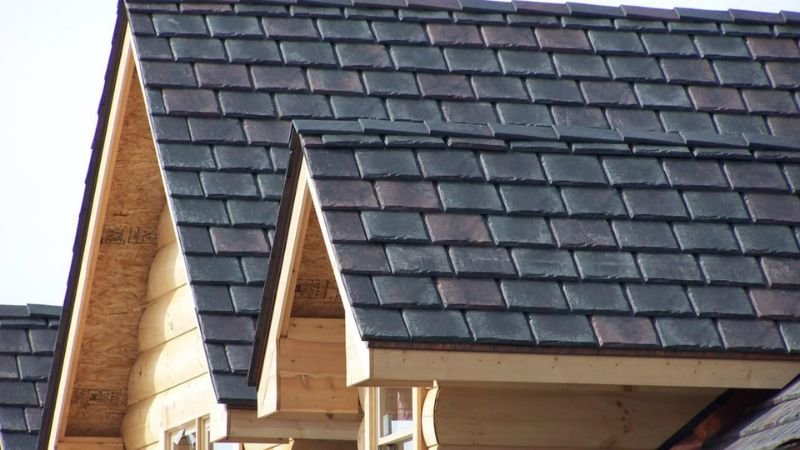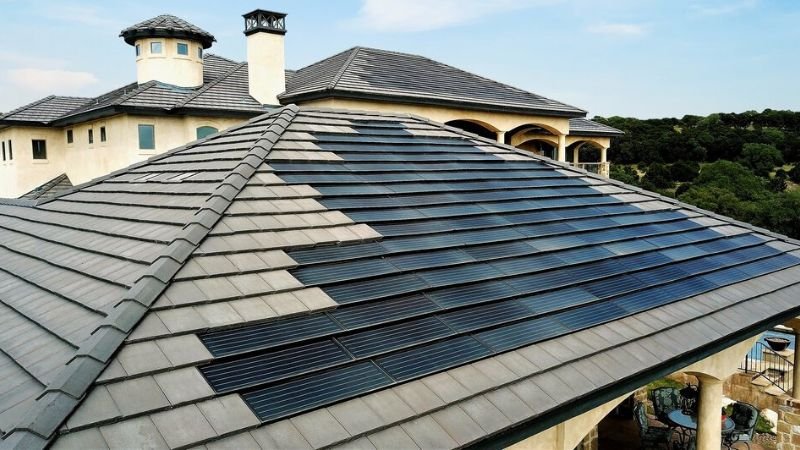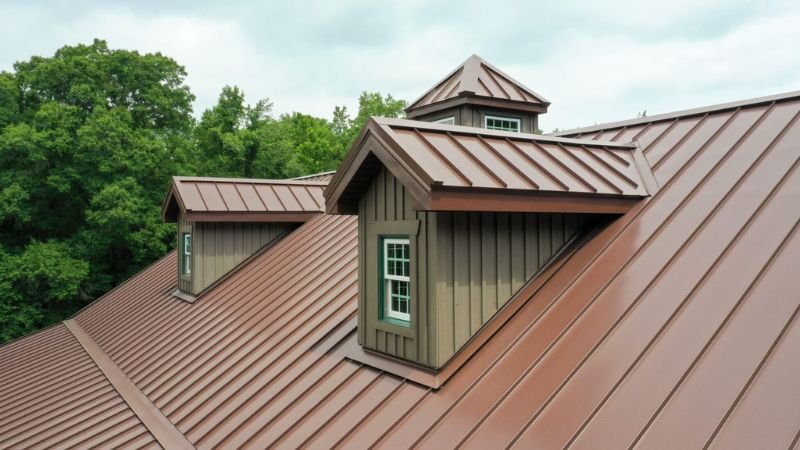Are you looking to make your home more sustainable? One impactful way to contribute to a greener planet is by choosing eco-friendly roofing options. Traditional roofing materials often have a significant environmental footprint, from resource extraction to disposal. In contrast, eco-friendly roofs are designed to be durable, energy-efficient, and made from sustainable or recycled materials. In this article, we’ll explore nine eco-friendly roofing options that can help reduce your home’s environmental impact while enhancing its aesthetic appeal and energy efficiency. Discover how you can make a difference with these innovative and sustainable roofing choices.
9 Eco Friendly Roofing Options To Consider
Recycled Shingles
Recycled shingles are made from waste materials like plastic, rubber, and wood fiber, which would otherwise end up in landfills. These shingles are designed to look like traditional asphalt shingles but with a much smaller environmental footprint. They are durable, weather-resistant, and can last up to 50 years with proper maintenance. Moreover, the production of recycled shingles uses less energy compared to new asphalt shingles, further reducing their environmental impact. By choosing recycled shingles, you contribute to waste reduction and promote the use of sustainable materials in the construction industry.
Also, Read – 10 Different Types Of Roofing Materials For Your Home
Metal Roofing
Metal roofing is an excellent eco-friendly option due to its longevity, recyclability, and energy efficiency. Metal roofs can last 40-70 years, reducing the need for frequent replacements. They are often made from recycled materials and can be recycled at the end of their life, minimizing waste. Additionally, metal roofs reflect solar heat, reducing cooling costs and energy consumption in your home. Available in various styles and colors, metal roofing can enhance your home’s aesthetic appeal while offering superior protection against the elements. Choosing a metal roof is a durable and sustainable option that can significantly reduce your environmental footprint.
Cool Roofs
Cool roofs are designed to reflect more sunlight and absorb less heat compared to standard roofs. This is achieved through reflective materials or coatings that enhance the roof’s albedo. By keeping your home cooler, cool roofs reduce the need for air conditioning, which lowers energy consumption and utility bills. They also help mitigate the urban heat island effect, where urban areas become significantly warmer than their rural surroundings. Cool roofs can be made from various materials, including metal, tiles, and shingles, allowing you to choose a style that suits your home. Investing in a cool roof is a practical way to enhance energy efficiency and comfort in your home.
Green Roofs
Green roofs, also known as living roofs, are covered with vegetation and soil, providing a natural insulation layer and improving air quality. They absorb rainwater, reduce runoff, and provide habitats for wildlife, contributing to biodiversity in urban areas. Green roofs also help regulate indoor temperatures by providing natural insulation, reducing the need for heating and cooling. While the initial installation cost can be higher, the long-term benefits, including energy savings and extended roof lifespan, make green roofs a worthwhile investment. With their aesthetic and environmental advantages, green roofs are a beautiful and sustainable choice for eco-conscious homeowners.
Also, Read – 9 Benefits Of Metal Roofing For Homes
Solar Tiles
Solar tiles, or solar shingles, integrate solar power technology directly into the roofing material, allowing you to generate renewable energy while protecting your home. These tiles are designed to look like traditional roofing materials, offering a seamless and aesthetically pleasing appearance. By generating your own electricity, you can reduce your reliance on fossil fuels and lower your energy bills. Solar tiles are durable, weather-resistant, and can significantly increase your home’s value. Installing solar tiles is an innovative way to harness renewable energy and contribute to a more sustainable future.
Clay and Slate Tiles
Clay and slate tiles are natural roofing materials known for their durability, longevity, and minimal environmental impact. Clay tiles are made from natural clay that is baked at high temperatures, while slate is a natural stone that is split into thin, flat pieces. Both materials have a lifespan of over 100 years, reducing the need for frequent replacements and waste. They are also energy-efficient, providing natural insulation that helps regulate indoor temperatures. Additionally, clay and slate tiles are recyclable at the end of their life. Choosing clay or slate tiles is a timeless and sustainable option that adds a touch of elegance to your home.
Rubber Roofing
Rubber roofing is made from recycled tires and other rubber materials, making it an environmentally friendly choice. This type of roofing is highly durable, weather-resistant, and can last up to 50 years with minimal maintenance. Rubber roofs are also energy-efficient, providing excellent insulation that helps reduce heating and cooling costs. They are available in various styles and colors, allowing you to achieve the desired look for your home. By opting for rubber roofing, you support recycling initiatives and contribute to reducing landfill waste. It’s a practical and sustainable option for eco-conscious homeowners.
Wood Shingles and Shakes
Wood shingles and shakes are made from sustainably harvested wood, providing a natural and renewable roofing option. They offer a rustic and charming appearance that can enhance your home’s curb appeal. Wood shingles and shakes are biodegradable, reducing their environmental impact at the end of their life. They also provide natural insulation, helping to regulate indoor temperatures and reduce energy consumption. With proper maintenance, wood roofing can last up to 30 years. Choosing wood shingles or shakes is a way to support sustainable forestry practices and create a warm, natural look for your home.
Synthetic Slate
Synthetic slate is made from a combination of recycled plastic and rubber, mimicking the appearance of natural slate without the environmental impact. This material is lightweight, durable, and weather-resistant, offering a lifespan of up to 50 years. Synthetic slate provides the elegant look of natural slate without the high cost and weight. It is also energy-efficient, reflecting sunlight and reducing heat absorption. By choosing synthetic slate, you can achieve the classic look of slate roofing while supporting the use of recycled materials. It’s a practical and sustainable option for those looking to reduce their environmental footprint.
Conclusion
Choosing an eco-friendly roofing option is a smart investment for both your home and the environment. These sustainable materials not only reduce your carbon footprint but also offer long-term benefits such as energy savings and increased property value. By opting for eco-friendly roofing, you contribute to a healthier planet and set a positive example for others. Explore these nine options and take the first step towards a more sustainable future for your home.
FAQs
What are some benefits of eco-friendly roofing?
Eco-friendly roofing provides energy savings, durability, reduced environmental impact, and often enhances the aesthetic appeal and value of your home.
Are eco-friendly roofing materials more expensive?
While the initial cost may be higher, eco-friendly roofing materials often save money in the long run through energy efficiency and reduced maintenance costs.



